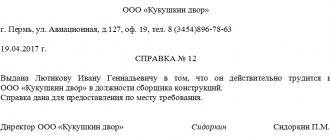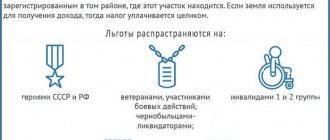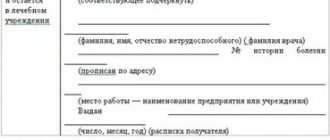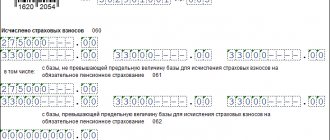The legal topic is very complex, but in this article we will try to answer the question “Mobile Phone Accounting for the Needs of the Organization in 2021.” Of course, if you still have questions, you can consult with lawyers online for free directly on the website.
If a mobile phone is registered as an inventory item, then the costs of its purchase are written off as expenses at a time when the phone is transferred to an employee of the organization. At the same time, at the time the cost of the phone is written off, it must be put on off-balance sheet accounting, where it will be listed until the moment it is written off.
Mobile Phone Accounting for Organizational Needs in 2021
In tax accounting, expenses for the purchase of a mobile phone used for the production purposes of the enterprise are accepted in full (under OSNO - at the time the phone is issued to the employee or at the time of commissioning, under the simplified tax system - at the time of payment). Input VAT by taxpayers under the basic taxation regime is also fully deductible.
Mobile phone accounting
Using a mobile phone is not possible without a SIM card, the cost of SIM cards is reflected in the material costs of the organization; if when buying a SIM card, the fee for it is credited to the phone balance, then this amount must be put towards an advance payment for communication services.
In accordance with clause 5 of PBU 6/01, a cost criterion is established in accounting, which allows assets that meet the criteria of fixed assets (clause 4 of PBU 6/01) to be taken into account not as fixed assets, but as inventories. However, this cost limit is not 100,000 rubles, but 40,000 rubles. At the same time, this criterion may be lowered in the Accounting Policy for accounting purposes. And if desired, all objects that meet the conditions for recognizing them as fixed assets can be accounted for in account 01 “Fixed Assets”, regardless of their cost (Order of the Ministry of Finance dated October 31, 2000 No. 94n).
Recognition of fixed assets as depreciable in accounting and tax accounting depends, among other things, on their cost. We will tell you about the features of accounting for fixed assets up to 100,000 rubles in 2021 for accounting and profit tax purposes in our consultation.
Accounting for fixed assets worth up to 100,000 rubles
In any case, it is important to take into account that fixed assets worth more than 40,000 rubles cannot be reflected in accounting as materials, even if this is provided for in the Accounting Policy. Therefore, fixed assets from 40,000 to 100,000 cannot be accounted for by the organization in account 10 “Materials”. At the same time, when we say “from 40,000,” we mean more than 40,000, since an object with an initial cost of exactly 40,000 rubles can still be taken into account as inventories.
All government institutions are required to prepare budget estimates for 2021 according to the new rules. The procedure came into force on March 25, 2021. But it should have been used only when drawing up budget estimates for 2021 (Order of the Ministry of Finance No. 26n).
We recommend reading: How to register a garage on private housing construction land under the dacha amnesty in 2021
Officials did not limit themselves to introducing new codes, but completely changed the procedure for applying BC and KOSGU. Thus, from 01.01.2021, Order of the Ministry of Finance No. 209n comes into force, establishing a new procedure for the application of KOSGU.
Budget estimates
It is worth noting that previously, reporting was considered compiled only after the paper version of the accounting report was signed by the head of the institution. In 2021, a paper report is not required, only an electronic format is required.
The organization purchased a cell phone for the chief physician for official calls; in this case, will the cell phone be the main means? Who should deliver it directly to the chief physician or the employee to whom the production and business equipment is assigned?
Mobile communications: how to control
Recording of conversations on a mobile phone for business purposes can be organized in several ways:
- detailing;
- limiting;
- using unlimited tariffs.
The detailing of the negotiations comes down to a detailed analysis of the list of calls and the telephone numbers to which they were made. Personal calls are excluded from costs, and calls of a production or work nature are taken into account.
Detailed negotiations are a compelling argument when checking the validity of costs by tax inspectors. At the same time, informal communication over the phone allows, for example, to effectively sell goods to friends, acquaintances, and relatives of company employees. This dilemma can cause conflicts when assigning costs to one category or another. In addition, carrier detailing services typically require additional fees.
When limiting negotiations, employees are allocated a certain amount monthly, which should cover official negotiations. Often, detailing precedes the limiting stage: analysis of detailed reports helps determine optimal spending limits. At the same time, for tax authorities, all amounts in excess of the limit will by default be economically unjustified.
Connecting to unlimited tariffs greatly simplifies accounting, since there is no need to control the amounts for “business” calls and separate business expenses from personal ones. In addition, according to the Ministry of Finance (letter No. 03-03-06/1/378 dated 06/23/2011), their use does not prevent them from being included as expenses for NU purposes.
The use of office telephones by employees is prescribed in the Internal Labor Regulations. Some companies publish a special LNA - Rules for the use of business cellular communications.
Important! If the SIM card is issued to an individual, for example, to the director of a company, you cannot pay for cellular communications from your current account and record it in your accounts. However, it is legal to establish compensation for an employee for using a personal telephone for business purposes.
Accounting for a telephone purchased by an institution for the personal needs of an employee
When transferring phones for use by employees, additionally reflect them in the balance on account 27 “Material assets issued for personal use to employees (employees).” Keep analytical accounting for account 27 in the quantitative and total accounting card (f. 0504041). This procedure follows from paragraphs 385–386 of the Instructions to the Unified Chart of Accounts No. 157n.
Question
Firstly
, an institution can independently purchase mobile phones and issue them to its employees. In this case, include the telephone in fixed assets and record it in account 101.04 “Machinery and Equipment” (OKOF code 320.26.30.22). This follows from paragraph 38 of the Instructions to the Unified Chart of Accounts No. 157n.
Also, business entities with simplified accounting schemes received the right to immediately depreciate at full price fixed assets related to inventory (they have a low price and a short service life). Such measures allow such entities to reduce the burden when calculating property taxes.
Fixed assets are property owned by the company or attracted by it from the outside, which is used in its production activities for more than one year and has a value above the limit established by regulations.
OS costing up to 40 thousand rubles
Attention! New directories should only be used for objects that began to be used in 2021 and later. There is no need to make corrections to the accounting cards of all previously accepted fixed assets and recalculate their depreciation. This rule is mandatory for both accounting and tax accounting.
In any case, it is important to take into account that fixed assets worth more than 40,000 rubles cannot be reflected in accounting as materials, even if this is provided for in the Accounting Policy. Therefore, fixed assets from 40,000 to 100,000 cannot be accounted for by the organization in account 10 “Materials”. At the same time, when we say “from 40,000,” we mean more than 40,000, since an object with an initial cost of exactly 40,000 rubles can still be taken into account as inventories.
Decommissioning of phones
The write-off of office equipment in a budgetary organization is regulated by the Regulations approved by the Decree of the Government of the Russian Federation dated October 14, 2021. No. 834. In general, the procedures differ little: municipal organizations can decide to write off equipment on their own by creating a special commission, which must include specialists in this profile. However, the situation when the staff contains professionals responsible for the disposal of equipment is quite rare. In this case, the law suggests seeking help from third-party expert organizations that have the appropriate certification.
It is important that the write-off procedure allows you to reduce the tax burden, since all equipment on the organization’s balance sheet is taxed. In addition, it is not uncommon for damaged and outdated equipment to gather dust in warehouses for years, taking up useful space.
Cell phone as a primary means in 2021
For the purposes of this accounting, fixed assets that were registered later than December 31, 2021, and less than this limit, can be immediately transferred to expenses. If its price is more than 100 thousand rubles, then the object will have to be depreciated using one of the two proposed methods.
Write-off of fixed assets worth up to 100,000 rubles
If you purchased an expensive telephone set (more than 10,000 rubles), then you cannot take its cost into account at one time in your expenses. The fact is that in this case the telephone will be classified as a fixed asset for tax accounting purposes. And their cost is written off as expenses through depreciation.
The bonus does not apply if objects are not subject to depreciation (for example, land), are received free of charge, are the subject of leasing, or if they are excluded from depreciable property due to transfer to conservation for a period of more than 3 months, transfer to gratuitous use or reconstruction for a period of more than 12 months (provided that the facilities are not in use during reconstruction).
We recommend reading: Benefits for St. Petersburg pensioners when traveling on suburban transport in 2021
This video is unavailable
The scammers called Olga Mikhailova and told her in her son’s voice that he had been taken to the police station and urgently needed to bring money. Famous director Roman Viktyuk received an SMS from fraudsters that his bank card was blocked due to a failure in the bank system. The swindlers tricked the director into playing by their own rules and thus debited 400 thousand rubles from his account.
Russia is being attacked by fraudsters! This is what they call telephone scammers. Criminals do not sleep; every day new schemes appear in their arsenal to take money from gullible citizens. They mainly speculate on greed and related feelings.
Fixed assets in accounting and tax accounting in 2021
In accounting, the use of increasing factors (not higher than 3) is possible only if the organization calculates depreciation using the reducing balance method. In taxation, special coefficients can be applied to the depreciation rate, calculated both linearly and non-linearly. However, the number of applications of these coefficients is limited. For example, organizations have the right to apply an increased coefficient to the depreciation rate (but not higher than 2) for objects used in an aggressive environment and/or increased shifts (with some restrictions).
Application of coefficients to depreciation rates in accounting and tax accounting
One of the main characteristics of fixed assets in tax and accounting in 2021 is the initial cost. It depends on it whether the object will be used as a primary means or not. Find out what the minimum value of fixed assets is established by the code and PBU in the new year and how to apply the limits.
It makes sense to avoid discrepancies in the formation of the initial cost, since the increased initial cost of fixed assets in accounting does not bring any economic benefits. The only justification for additional inconvenience for an accountant due to differences in accounting is the need to increase assets in order to make the financial statements more attractive to credit institutions or investors, for example.
Fixed assets in accounting in 2021
Since the payment was made in parts, the first paid part was RUB 2,000,000. - an entry should have been made in section 2 of the Book of Income and Expenses on February 24, 2021. In section 1, it was supposed to be written off in four stages in equal shares of 500,000 rubles. (RUB 2,000,000: 4 quarters) March 31, June 30, September 30 and December 31, 2021.
Tax accounting of fixed assets under the simplified tax system
The Ministry of Finance in this PBU only provides for the possibility of classifying objects that meet the criteria of fixed assets, but costing less than 40,000 rubles. to inventory accounts. It should be noted that this is a right, not an obligation of the organization. The only strict criterion is objects worth 40,000 rubles. and it can no longer be attributed to the MPZ.
- income from non-exchange transactions (for example, income from taxes, fees, including state duties, customs duties, income from insurance contributions for compulsory social insurance, income from gratuitous revenues from budgets, income from fines, penalties, penalties, compensation for damage);
- income from exchange transactions (income from property, income from sales).
- useful life of fixed assets and intangible assets;
- the amount of estimated reserves;
- the amount of depreciation charges;
- the value of non-financial assets in cases provided for by federal and (or) industry accounting standards for public sector organizations.
Cash flow statement
For accounting purposes, the criterion for recognizing income is the possibility of obtaining economic benefits or useful potential associated with transactions (events), provided that their amount (monetary value) can be reliably determined (clause 7 of the GHS “Income”).
- Any balance sheet consists of assets and liabilities. The difference is that state employees distribute these items, separately reflecting the use of targeted funds and their own profits.
- “Businessmen” reflect in their reports, in addition to the current one, two more previous years, and “public sector employees” – only the previous one.
- Budgetary spheres divide assets into financial and non-financial, and funds into material and monetary; For commercial structures, the division is fundamentally different.
- The budgetary liability reflects all types of obligations, and the commercial one divides them according to terms.
We recommend reading: By what percentage was the salary increased in the Tver region for labor veterans
The main principles of accounting remain unchanged, no matter in what organization it is carried out. Everywhere you need to take into account cash, inventories, all kinds of assets and liabilities, reflecting this in the documentation and promptly informing the regulatory authorities.
Differences in reporting
The main difference between commercial and budget accounting is the different accounts on which all business transactions are reflected. For the budgetary sector, a special Chart of Accounts is provided, containing 26 categories.
The last point is especially important because it creates different budget conditions for accepting fixed assets into tax and accounting. The latter needs fixed assets to start in 2021 from an amount of 40 thousand rubles, the tax authorities - from 100 thousand rubles. Only then can it be included in the reporting.
Enter the site
Step one. Creation of a permanent commission at the enterprise to resolve issues of write-off, determine the feasibility and effectiveness of the further use of fixed assets, and prepare documentation for the write-off of these objects. Such a commission is created on the basis of an order from the head. Subparagraphs 40 and 41 of the Instruction on the reflection in accounting of business transactions with fixed assets, approved by Resolution of the Ministry of Finance of the Republic of Belarus dated December 20, 2021 No. 127 (as amended by Resolution No. 208 dated December 29, 2021, hereinafter referred to as Instruction No. 127): the competence of the commission includes: inspection an object subject to write-off, using the necessary technical documentation, as well as accounting data, establishing the unsuitability of the object for restoration and further use; establishing the reasons for the write-off of an object (physical and (or) obsolescence, partial liquidation, reconstruction, violation of operating conditions, accidents, natural disasters and other emergencies, long-term non-use of the object for the production of products, performance of work and services, or for other economic needs); establishing the possibility of using individual components, parts, materials of the decommissioned object and their assessment based on the prices of possible use; exercising control over the removal of non-ferrous metals and precious materials from decommissioned objects, determining their quantity and weight; drawing up relevant acts for the write-off of fixed assets.
Step three. Evaluation of usable parts, assemblies, etc. In our case, usable parts must be capitalized at the price of possible use. The price is set by a commission (therefore, technical service workers should be included in the commission) and can be equal to the residual value (if it is possible to determine such a value) or the cost of available spare parts with a certain percentage of wear and tear. Step four. Capitalization of serviceable mechanisms and other materials. To confirm the fact of disassembly, as well as the quantity and cost of materials received from disassembly of a disposed object, an act of receipt of materials received from disassembly is used. Please note, however, that the cost of material assets received from disassembly, as well as the costs of writing off fixed assets, is reflected in section 5 of the act of form OS-4a “Information on costs associated with writing off vehicles from accounting, and on receipt material assets from their write-off,” and to capitalize serviceable parts, a receipt order (form M-4p) or an invoice for internal movement of materials (form M-13p) must be issued.
Fixed assets in accounting and tax accounting in 2021: changes
It is worth noting here the special conditions for the library collection. If its price is less than 100 thousand rubles, then its depreciation will be 100% when the object begins to be used; if it is more than 100 thousand, then the calculation takes place according to established standards. You can read more about this at the link.
Fixed assets in accounting
Fixed assets include property at the disposal of the organization, used to perform work in the selected type of activity. Only those objects whose period of use exceeds one calendar year are recognized as such. Therefore, annual reporting cannot be done without them. This article will tell you in more detail how fixed assets are recorded in accounting and tax accounting in 2021.
According to clause 10.2.1 of the Procedure for applying the classification of operations of the public administration sector, approved by Order of the Ministry of Finance of Russia dated November 29, 2021 No. 209n, the purchase of communication services falls under subarticle 221 of KOSGU “Communication Services”. This KOSGU includes:
According to paragraph 32 of Art. 2 of the Federal Law of July 7, 2003 No. 126-FZ “On Communications” (hereinafter referred to as Law No. 126-FZ), communication service is the activity of receiving, processing, storing, transmitting, delivering telecommunication messages or postal items. Postal service, according to Art. 2 of the Federal Law of July 17, 1999 No. 176-FZ “On Postal Communications” is a type of communication that represents a single production and technological complex of technical and transport means that ensures the reception, processing, transportation, delivery (delivery) of postal items, as well as postal money transfers. Telecommunications are any emissions, transmission or reception of signs, signals, voice information, written text, images, sounds or messages of any kind via radio, wire, optical and other electromagnetic systems (clause 35 of Article 2 of Law No. 126-FZ). Telecommunications include the Internet, radio communications, television, etc. The activities of legal entities and individual entrepreneurs in the paid provision of communication services are carried out only on the basis of a license to carry out activities in the field of provision of communication services (Part 1, Article 29 of Law No. 126-FZ). On the territory of the Russian Federation, communication services are provided by communication operators to users of communication services on the basis of an agreement for the provision of communication services, concluded in accordance with civil legislation and the rules for the provision of communication services (Part 1, Article 44 of Law No. 126-FZ). The rules are approved for each type of communication separately. For example, the Rules for the provision of postal services were approved by order of the Ministry of Telecom and Mass Communications of Russia dated July 31, 2021 No. 234.







